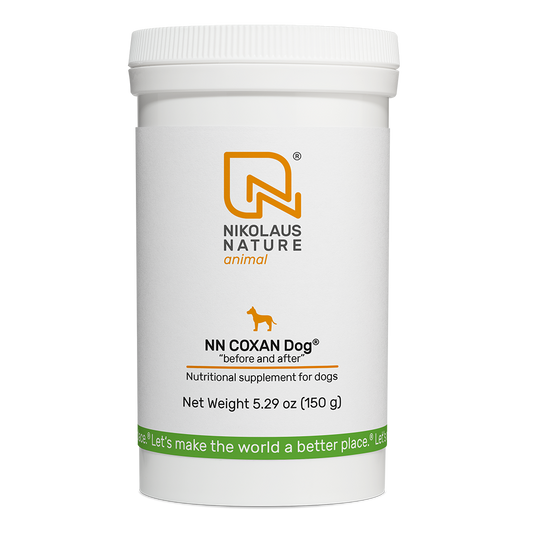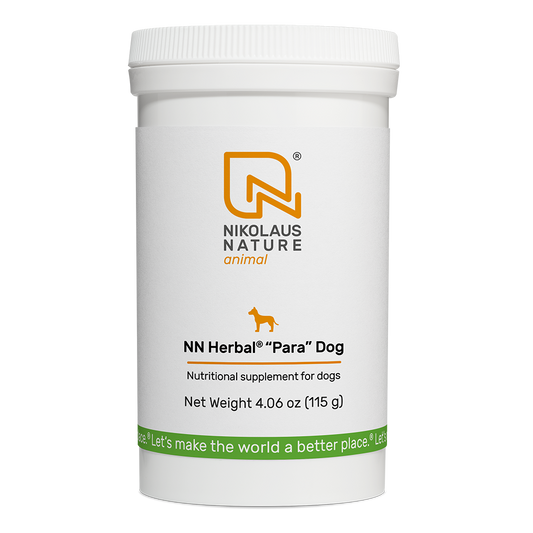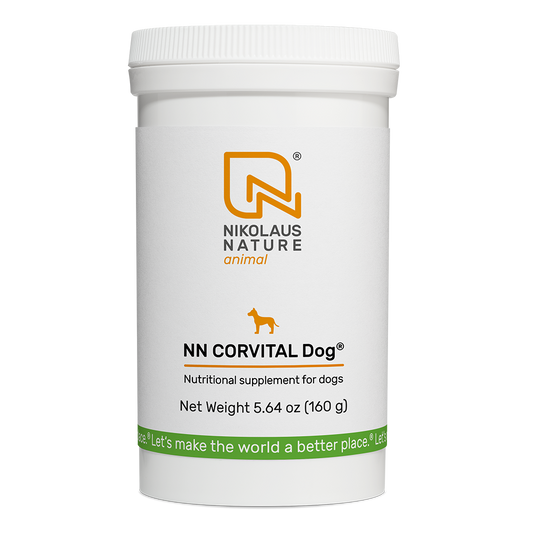Can Dogs Eat Garlic? Truth About Its Toxicity & Safety
If you have searched the topic “Can Dogs Eat Garlic?” online, you've likely come across many articles warning that garlic is harmful to dogs. Some websites and even some veterinarians say it's dangerous. But is this really true?
As someone who cares about your dog, you want to be sure you're not feeding them anything harmful. It's natural to be confused when you hear different things from different sources. That's why we're here to talk all about garlic and dogs. To put it simply:
Yes, dogs can eat garlic, but only in tiny amounts. In fact, small doses are not harmful and can even have some health benefits. However, several factors must be considered, like the size and health of the dog, the amount of garlic consumed, and the form in which it is given (raw, cooked, powdered, or in supplements).
Keep reading to learn more about the complexities of garlic consumption in dogs, including its potential toxicity, health benefits, and guidelines for safe use.

Is Garlic Safe For Dogs?
Fresh garlic is safe for dogs when given in small or recommended amounts. It contains beneficial compounds like antioxidants and sulfurs, which can have health benefits for dogs when used cautiously. However, garlic also contains thiosulfate – a compound that can be toxic to dogs if ingested in large quantities.
The toxicity of garlic is directly related to the amount consumed. This means that the larger the amount of garlic ingested, the higher the risk of adverse effects. For example, a small dog eating a single clove of garlic is more likely to experience toxicity than a large dog eating the same amount.
There are specific situations where garlic is NOT safe for dogs, and we will discuss these conditions in detail below.
Garlic Poisoning in Dogs: Risks and Realities
Garlic belongs to the Allium family, which also includes onions, chives, and leeks. These plants contain high amounts of thiosulphates that are considered toxic to dogs but not to humans. Thus, it is known to cause significant harm when used in larger amounts.
Thiosulphate in Garlic and Hemolytic Anemia
The primary concern with garlic toxicity in dogs is the presence of thiosulfate, a compound that can damage red blood cells. When dogs ingest large amounts of thiosulfate, it can lead to a condition called hemolytic anemia.
How does Thiosulfate cause hemolytic Anemia?
When a dog eats too much garlic, thiosulfate is absorbed into the bloodstream. Inside the red blood cells, thiosulfate undergoes a chemical reaction that leads to the formation of Heinz bodies. These abnormal protein clumps damage the cell membrane of the red blood cells.
As a result, the affected cells become fragile and are more likely to break apart. This process, known as hemolysis, occurs when the damaged red blood cells are destroyed faster than the body can replace them, ultimately resulting in hemolytic anemia.
Remember! Hemolytic anemia from garlic consumption is usually not immediate. It often takes several days of repeated exposure or a single large dose for signs to appear.
Clinical Signs of Garlic Poisoning in Dogs
The signs of garlic poisoning in dogs can vary depending on the amount consumed and the dog's sensitivity. Some common signs include:
- Lethargy
- Weakness
- Pale gums
- Rapid breathing
- Increased heart rate
- Vomiting
- Diarrhea
- Jaundice (yellowing of the skin and eyes)
- Loss of appetite
- Dark-colored urine
If you see any of these signs in your dog, contact your veterinarian immediately.

Scientific Studies on Garlic Toxicity in Dogs
Several scientific studies have investigated the effects of garlic on dogs, with varying results depending on the methodology and dosage used.
K.W. Lee et al. (2000)
In the study by K W Lee and colleagues, the researchers aimed to determine the hematologic effects of garlic extract on dogs. The experiment involved eight healthy adult mixed-breed dogs, which were divided into two groups. Four dogs received an intragastric administration of garlic extract at a dosage of 1.25 ml/kg body weight (equivalent to approximately 5 grams of whole garlic per kilogram) once daily for seven days.
The control group, consisting of the remaining four dogs, was administered water instead of garlic extract. The researchers conducted complete blood counts and assessed various hematologic parameters before the administration of garlic extract and for 30 days afterward.
Findings: The study found that the erythrocyte count, hematocrit (Hct) (the percentage of red blood cells in the blood), and hemoglobin concentration in the dogs that received garlic extract decreased significantly, reaching their lowest values between days 9 and 11.
Additionally, the formation of Heinz bodies—indicative of oxidative damage to red blood cells—was observed, along with an increase in eccentrocytes (abnormally shaped red blood cells), which are abnormal red blood cells that can form due to oxidative stress.
Our Analysis
A closer examination of the study reveals a more different picture. The dosage of garlic extract used in this study (1.25 ml or 5 grams/kg body weight) was significantly higher than what a dog would typically consume through normal dietary means. This raises questions about the relevance of these findings to real-world scenarios.
Also, the study used garlic extract, which has a different composition and concentration of thiosulfate than whole garlic cloves.
Most importantly only oxidative damage to cells was observed, none of the dogs in the study developed clinical signs of hemolytic anemia. This suggests that the changes must be severe enough to cause significant health problems.
Study in 2018 (M. Yoshioka et al.)
A more recent study published in 2018 examined the safety and efficacy of aged garlic extract (AGE) in dogs. The research aimed to evaluate the long-term effects of AGE on canine health. The study involved administering AGE at dosages of 45 mg/kg and 90 mg/kg body weight to dogs over a 12-week period.
Findings: The findings indicated that while some dogs experienced mild gastrointestinal disturbances, such as soft feces or vomiting, these symptoms were not consistently linked to the administration of AGE. Importantly, the study did not observe any significant increases in inflammatory markers, suggesting that AGE did not provoke gastrointestinal inflammation in the dogs.
Moreover, the study highlighted that AGE (a less irritative and odorless form compared to fresh garlic) contains stable and water-soluble sulfur-containing amino acids that offer various health benefits. These benefits include antioxidant properties, immunomodulation, and potential protective effects against certain diseases.
Our Analysis
This study used AGE, which is different from fresh garlic or garlic extract. AGE has a lower thiosulfate content and is considered safer for dogs. This study also investigated the effects of AGE over a 12-week period, providing insights into the long-term safety of this form of garlic.
Some studies suggest that high doses of garlic extract can cause hematologic changes, other research indicates that aged garlic extract is safe and even beneficial for dogs. It's important to consult with your veterinarian before giving your dog any form of garlic, as they can help you determine the appropriate dosage and form based on the needs of your dog and its health status.
Potential Benefits of Garlic For Dogs (When Used Cautiously)
When garlic is used cautiously and in appropriate amounts, it may offer several health benefits for dogs. It's important to note that most of the research has been conducted on humans. Many people have observed positive effects from adding garlic to their diets, and while we believe some of these benefits may also apply to dogs, more research is needed to confirm their efficacy and safety in canines.
Here are some advantages, when you used garlic cautiously in your dog's diet:
- Cholesterol Reduction: Garlic helps lower cholesterol levels in dogs and reduce the risk of cardiovascular issues.
- Blood Clot Prevention: Garlic has anti-platelet properties that help prevent the formation of blood clots and promote healthy blood flow.
- Tumor Prevention: Research indicates that garlic contains organosulfur compounds with potential anti-tumor effects, which could help reduce the risk of cancers in dogs.
- Enhanced Blood Flow: Garlic acts as a vasodilator, meaning it can widen blood vessels and improve circulation. This can be beneficial for dogs with circulatory conditions.
- Natural Defense: Garlic has antimicrobial properties that help boost the immune system and protect against infections.
- Lymphatic System Support: Garlic is believed to stimulate the lymphatic system by helping to remove of waste products and toxins from the body.
Can Garlic Help with Fleas?
Garlic can be used as a natural way to help keep fleas away from dogs. Some holistic veterinarians believe that feeding garlic to dogs during flea and tick season can be effective because the sulfur compounds in garlic are released through the dog's skin, which makes the dog's blood taste less appealing to fleas.
Dr. Karen Becker, suggests that the FRESH garlic (if fed within six hours of crushing) can naturally help repel fleas and ticks. She added that powdered, capsuled, or pilled versions are less effective and should be avoided in all cases—it's best to use the real thing.
To see any potential benefits, it's recommended to start giving garlic to your dog a few weeks before flea season begins. This allows the garlic to build up in the dog's natural coat oil.
Note: Garlic should only be used as part of an overall natural flea and tick prevention regimen, and regular veterinary checkups are still recommended. Effective natural supplements like NN Herbal - Dog Pest Supplement can be used alongside garlic for comprehensive flea and tick protection.
Select Fresh, Raw Garlic for Your Dog
When you decide to give garlic to your dog, choose the right type. Always use fresh, raw, organically grown garlic over processed forms. Fresh, raw garlic should be grown organically, preferably locally or in your own garden.
It is important to know the origin of your garlic, as some imported garlic, particularly from China contains unsafe levels of arsenic, heavy metals, and chlorine.
Fresh, raw garlic contains the highest concentration of beneficial compounds like allicin, which is believed to be responsible for many of garlic's potential health benefits. Allicin is formed when garlic is crushed or chopped, and it should be used within 10-15 minutes because it's most potent in its raw form.
Avoid Processed Garlic
Processed garlic, such as garlic powder, garlic salt, or jarred minced garlic, should be avoided as these forms often contain additives and preservatives that can be harmful to dogs. And, the processing of garlic reduces its beneficial compounds and increases its toxicity.
Preparing Garlic for Your Dog:
To prepare fresh garlic for your dog, peel and crush a small clove. Crushing the garlic helps release the allicin, making it more bioavailable for your dog. You can mix the crushed garlic with a small amount of your dog's regular food.

When NOT to Give Your Dog Garlic
While garlic can be safe for some dogs in moderation, there are certain situations where it's best to avoid giving garlic altogether. These include:
Sensitive Breeds
Some dog breeds, particularly those of Japanese descent like Akitas and Shiba Inus, are more sensitive to the effects of garlic than other breeds. These dogs have a genetic predisposition to oxidative damage from the thiosulfate in garlic. It's best to avoid giving garlic to these breeds altogether.
Dogs with Health Conditions
Dogs with certain health conditions, such as anemia, blood clotting disorders, or liver disease, should not be given garlic. Garlic can interfere with the blood's ability to clot and carry oxygen – which can worsen these conditions. Garlic can also put extra stress on the liver, which can be harmful for dogs with liver disease.
Drug Interactions
Garlic can interact with certain medications, such as blood thinners, immunosuppressants, and chemotherapy drugs. These interactions can interfere with the medication's effectiveness or increase the risk of side effects. If your dog is taking any medication, consult with your veterinarian before giving them garlic.
Pregnant or Nursing Dogs
The safety of garlic for pregnant or nursing dogs has not been studied well but It's best to be on the safe side and avoid giving garlic to these dogs. Garlic can potentially pass into breast milk and may affect the fetus and nursing puppies.
Puppies Under Six Months Old
Puppies have a developing immune system and are more sensitive to the effects of garlic than adult dogs. It's best to avoid giving garlic to puppies under six months old.
How Much Garlic Should You Give Your Dog?
When it comes to feeding garlic to your dog, it's important to be very careful about the amount. Too much garlic can be toxic and make your dog sick. However, small amounts are safe for most dogs.
According to a book called "The Complete Herbal Book for the Dog" by Juliette de Bairacli Levy, you can give your dog the following amounts of garlic:
- For dogs weighing 10 to 15 pounds: 1/2 clove
- For dogs weighing 20 to 40 pounds: 1 clove
- For dogs weighing 45 to 70 pounds: 2 cloves
- For dogs weighing 75 to 90 pounds: 2 1/2 cloves
- For dogs over 100 pounds: 3 cloves
Clarifying Toxic Doses of Garlic
Now let's clarify the safe and toxic doses to help prevent confusion.
Toxic Dose
Some studies suggest approximately 15 to 30 grams of garlic per kilogram of body weight can cause harmful changes in their blood and lead to a condition called hemolytic anemia.
An average clove of garlic weighs between 3 and 7 grams.
For calculation purposes, let's use an average weight of 5 grams per clove.
For example, for a 50-pound dog (about 22.7 kg), 15 to 30 grams per kilogram would equal 340 to 681 grams of garlic in total. That means a 50-pound dog would need to eat around 68 to 136 cloves of garlic to reach the toxic dose.
Oxidative Damage Dose
According to a study by K W Lee et al. in 2000, 5 grams of garlic per kilogram of body weight can cause oxidative damage to red blood cells in dogs.
For example, for a 50-pound dog, this would be equivalent to around 113.5 grams of garlic or about 22 to 23 cloves to begin experiencing oxidative damage.
Garlic toxicity can occur when large amounts are consumed in a single day over a short period of time.
The dosages recommended in Juliette de Bairacli Levy’s book, which suggest 1 clove for dogs weighing 20 to 40 pounds and 2 cloves for dogs weighing 45 to 70 pounds, are significantly lower than these toxic thresholds.
FAQ About Can Dogs Eat Garlic?
Can dogs eat garlic bread?
No, dogs should not eat garlic bread. While a small amount of garlic might be tolerable for some dogs, garlic bread often contains other ingredients that can be harmful, such as butter, oils, and herbs. Additionally, the high carbohydrate content in bread can contribute to weight gain and other health problems in dogs.
Is garlic powder bad for dogs?
Yes, garlic powder is bad for dogs. Garlic powder is a concentrated form of garlic, meaning it contains a higher amount of thiosulfate than fresh garlic. This makes it more likely to cause toxicity in dogs, even in small amounts.
Is cooked garlic bad for dogs?
Yes, cooked garlic is still bad for dogs. Cooking garlic does not eliminate the thiosulfate content, and it can even concentrate it in some cases. Whether raw or cooked, garlic can be toxic to dogs in large enough amounts. It's important to avoid giving your dog any form of garlic, including cooked garlic in foods like sauces, soups, or stir-fries.
How to cure an upset stomach from garlic?
If your dog has consumed garlic and is experiencing an upset stomach, it's important to act quickly and appropriately. First, remove any remaining garlic from your dog's reach. Provide plenty of fresh water to help flush the system and prevent dehydration. Withhold food for a few hours to allow the stomach to settle, then introduce small amounts of bland food like boiled chicken and rice.
In some cases, activated charcoal may be administered to help absorb toxins, and medications or intravenous fluids to manage vomiting and diarrhea.
Sources:
-
Sodium 2-propenyl thiosulfate from boiled garlic (Allium sativum) that oxidizes canine erythrocytes,
'https://pubmed.ncbi.nlm.nih.gov/12913309/' -
Hematologic changes associated with the appearance of eccentrocytes after intragastric administration of garlic extract to dogs,
'https://pubmed.ncbi.nlm.nih.gov/11108195/' -
Safety and efficacy of aged garlic extract in dogs,
'https://pubmed.ncbi.nlm.nih.gov/30497454/' -
Garlic and onions: Their cancer prevention properties,
'https://www.ncbi.nlm.nih.gov/pmc/articles/PMC4366009/' -
Antibacterial Properties of Organosulfur Compounds of Garlic (Allium sativum),
'https://pubmed.ncbi.nlm.nih.gov/34394014/' -
Exports of Chinese garlic,
'https://www.europarl.europa.eu/doceo/document/E-8-2018-005257_EN.html' -
The Complete Herbal Handbook for the Dog and Cat,
'https://www.amazon.com/Complete-Herbal-Handbook-Dog-Cat/dp/0571161154' -
Some food toxic for pets,
'https://www.ncbi.nlm.nih.gov/pmc/articles/PMC2984110/'







